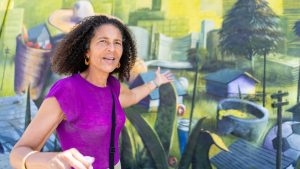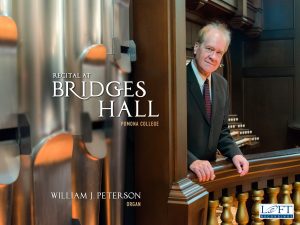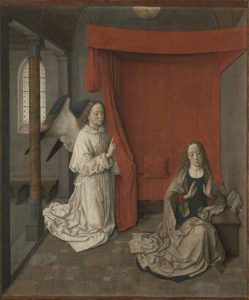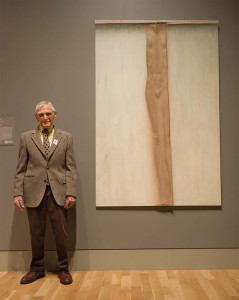Alison Rose Jefferson ’80 brings the history of L.A.’s Central Avenue to life.

Buildings tend to stand still. History never does.
Central Avenue, the hub of Black life in Los Angeles during the Jim Crow era, is now more associated with the taquerias and vibrant Spanish-speaking community that share the sidewalks today.
The Lincoln Theatre, nicknamed the “West Coast Apollo” in its heyday for hosting such performers as Count Basie, Duke Ellington, Nat “King” Cole and Billie Holiday, now hosts the congregation of the Iglesia de Jesucristo Judá. Yet at the nearby 28th Street YMCA, built in 1926, one can still glimpse the terra cotta likenesses of Booker T. Washington and Frederick Douglass in the upper corners, watching over a building that housed one of the few swimming pools where Blacks were always welcome.
Historian Alison Rose Jefferson ’80 seeks to illuminate both the past and present of this important South L.A. neighborhood in a deeply researched walking tour she created with Angels Walk LA, a nonprofit that has produced 10 other self-guided historic trails around the city. Jefferson and collaborator Martha Groves chose an inclusive embrace, highlighting both the 27th Street Bakery – owned by 1984 Olympic sprinter Jeanette Bolden and known for its Southern sweet potato pies – and the nearby Las Palmas Carniceria, known for its chorizo.
Angels Walk LA will install 15 stanchions highlighting some of the 65 sites along the trail that stretches roughly from 24th Street to Vernon Avenue later this year. They will tell the story of the neighborhood not only to those who live there but to curious visitors and the music lovers who flock to the Central Avenue Jazz Festival each July.
A Different Kind of Historian
A sociology major at Pomona College, Jefferson took an unusual academic path, returning to school to earn a master’s degree in heritage conservation from the University of Southern California in 2007 and a Ph.D. in history at UC Santa Barbara in 2015, 35 years after earning her undergraduate degree.
Her goal was to enhance a career in writing and public projects that has made her a sought-after expert for documentaries and other reports. It is a role sometimes defined as a “public historian,” and just one of many career paths for history majors beyond academia.
“I’ve always been interested in history,” says Jefferson, who worked for a historic preservation firm before pursuing a doctorate. But even as she devoted her days to documenting and preserving brick-and-mortar sites, Jefferson understood that history is what happens within and beyond the walls.
“The world of historic preservation really focuses on the built environment,” she says. “I decided I wanted a broader platform.”
By completing her doctorate, she acquired the training and credentials that bolster her qualifications for various efforts and grants.
“With a Ph.D., I could do a broader array of projects,” Jefferson says.
Among her many endeavors, she has expanded awareness of the Santa Monica beach at Bay Street that was sometimes known as the Inkwell during the era of de facto segregation in California, along with the life story of Nick Gabaldón, L.A.’s first documented surfer of African-American and Mexican-American descent. Jefferson also has an upcoming book, Leisure’s Race, Power and Place in Los Angeles and California Dreams in the Jim Crow Era, to be published by the University of Nebraska Press in late 2019.
A Walk in the Neighborhood
The stretch of Central Avenue that lies south of the 10 Freeway and north of Vernon is in some ways nondescript, like so many others in South Los Angeles marked by older storefronts with hand-painted signs and the occasional street vendor. But a stroll with Jefferson reveals the unseen history of the Jim Crow era and the early civil rights movement in L.A., along with the melding of the old neighborhood with the influx of Latin American immigrants.
It is not merely history to Jefferson: It’s also personal: Her grandfather, Dr. Peter Price Cobbs, was a neighborhood physician for many years before his death in 1960.
“My mother would bring us over here. I was little. I’d be fascinated, thinking, ‘I’m in the old neighborhood,’” Jefferson says.
Besides her long familiarity with the area, Jefferson drew on her extensive previous research and writing on the Black Angeleno experience to create the Central Avenue guide with Groves, a former Los Angeles Times reporter and editor. The pair delved into archive collections, examined census records, perused old photographs, and read articles from the three newspapers that once covered the community, the California Eagle, the Los Angeles Sentinel and the Times. They also drew from books and scholarly articles.
“A special treat of the research process that I enjoyed was visiting the businesses along the avenue and interviewing the owners for the information that was to go into the guidebook,” Jefferson says.
Middle-class Black families flourished in the area around Central Avenue during the first half of the 20th century in what was largely a parallel society to white L.A., where Blacks faced restrictions in the workplace and community. Blacks were even limited by which homes they could buy, Jefferson notes, at least until the system of racially restrictive “covenants” in property deeds was ruled unenforceable under the 14th Amendment in the 1948 U.S. Supreme Court decision Shelley v. Kraemer.
Segregation was not only a feature of the American South; it was also pervasive in L.A. The African American Firefighter Museum at historic Fire Station No. 30 on Central Avenue just north of the 10 Freeway documents the era from 1924 to 1955 when the city’s Black firefighters were allowed to serve only in two segregated fire stations, and promotions were limited.
Even nightlife was affected. Central Avenue became home to the famous jazz club scene dubbed the “Brown Broadway” by the California Eagle newspaper in part because Black musicians and their fans were not welcome at all-white clubs – though whites made forays to Central Avenue to visit famous spots like Club Alabam and Jack’s Basket Room.
At a time when luxury hotels would not serve Blacks, traveling musicians such as Ella Fitzgerald, Lena Horne and Louis Armstrong stayed at Central Avenue’s Dunbar Hotel, which opened in 1928 under the name Somerville Hotel just in time to host delegates to the first West Coast convention of the NAACP. Other dignitaries also stayed there, including boxer Joe Louis, poet Langston Hughes and future Supreme Court Justice Thurgood Marshall. The Dunbar still stands, with a lovely renovated courtyard, and is now part of a complex for low-income seniors and others.
A Changing Community
By the 1950s, Black families – including Jefferson’s – began to move farther south and west in the city, no longer limited to the old neighborhood. Some businesses and institutions from the earlier era still thrive, among them the Los Angeles Sentinel newspaper, which moved to Crenshaw Boulevard, and Second Baptist Church, a stately Romanesque Revival church that hosted speeches by Martin Luther King Jr. and Malcolm X. Still home to one of the most influential Black congregations in L.A., the church at 24th Street and Griffith Avenue was designed by trailblazing Black architect Paul Revere Williams and is on the National Register of Historic Places, as is his 28th Street YMCA, now housing for special needs adults and former foster youth.
Along with the Angels Walk heritage trail, other efforts to revitalize the neighborhood include the Central Avenue Constituent Services Center, a strikingly contemporary building that is home to the district office of L.A. City Councilman Curren D. Price Jr. Yet the community’s most vibrant indicator of its past, present and perhaps its future might be the neighborhood’s many murals.
On 42nd Place across from the Dunbar Hotel is a mural featuring such important figures as Dodgers star Jackie Robinson, Los Angeles Mayor Tom Bradley, longtime legislator Augustus F. “Gus” Hawkins and Nobel Peace Prize winner Ralph J. Bunche, whose boyhood home is on 40thPlace.
Jefferson points out another mural on the side of El Montoso Market at 40th Place that pays tribute to the Latin American immigrants who now make up 75 percent of the neighborhood’s population. A man hauls a basket filled with vegetables and a depiction of a house on his back, and the L.A. skyscrapers are shown as stacks of U.S. currency.
At 41st Street, another shows a black and brown hand clasped together, and above it, the words cultura cura: Culture heals.
A walk, Jefferson knows, can sometimes teach more than a lecture.
 Mary Kamitaki ’15 started doing theatre when she was little, a budding “backyard” playwright, performing plays based on fairy tales with her friends, complete with a bedsheet as a stage curtain. The curtain didn’t close in her childhood — and it’s not closing anytime soon. Now the play she wrote, “Southernmost,” is running at the Playwright’s Arena Theatre in Los Angeles, her first professional production.
Mary Kamitaki ’15 started doing theatre when she was little, a budding “backyard” playwright, performing plays based on fairy tales with her friends, complete with a bedsheet as a stage curtain. The curtain didn’t close in her childhood — and it’s not closing anytime soon. Now the play she wrote, “Southernmost,” is running at the Playwright’s Arena Theatre in Los Angeles, her first professional production. The Brooklyn, New York, based indie rock band We Are Scientists—the creation of bassist Chris Cain ’99 and guitarist Keith Murray ’00, who’ve now been performing together for almost 20 years—released the group’s sixth full-length album last April from 100% Records—a new collection of original pop songs, including “One In, One Out” and “Heart Is a Weapon.”
The Brooklyn, New York, based indie rock band We Are Scientists—the creation of bassist Chris Cain ’99 and guitarist Keith Murray ’00, who’ve now been performing together for almost 20 years—released the group’s sixth full-length album last April from 100% Records—a new collection of original pop songs, including “One In, One Out” and “Heart Is a Weapon.”






 March 6, at Pomona College and Scripps College, invites viewers to contemplate the visceral, spiritual, emotional and political dimensions of diaspora.
March 6, at Pomona College and Scripps College, invites viewers to contemplate the visceral, spiritual, emotional and political dimensions of diaspora.